Guinness: The Best Guide to Ireland’s #1 Beer
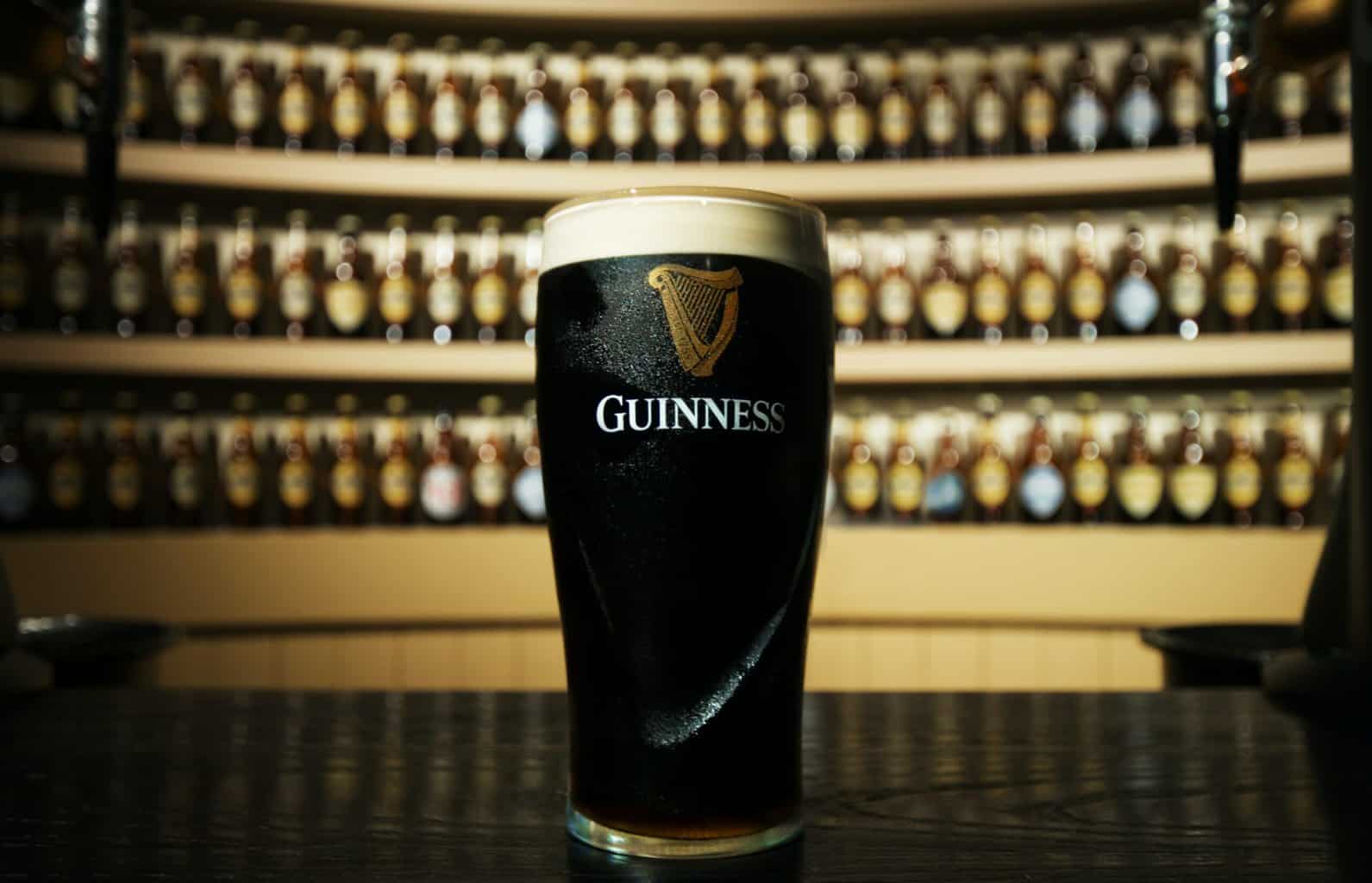
Updated On: April 15, 2024 by Courtney Augello
In the brewing world, certain names evoke more than just the taste of a beverage; they conjure stories, traditions, and cultural identities. Among these iconic names, none stands taller than Guinness.
The Guinness Brewery has evolved from its humble origins to become a global symbol of craftsmanship, innovation, and Irish pride. Its rich history, unique brewing process, distinct flavour profile, and profound impact on Ireland’s cultural identity have woven a tapestry that spans centuries and continents.
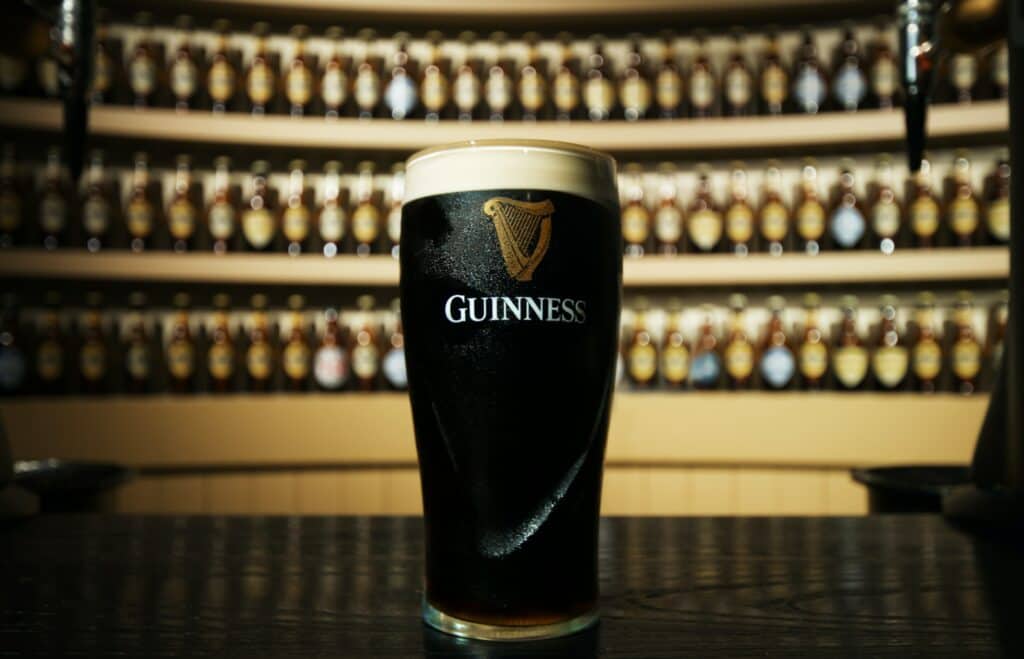
From the roasted barley that imparts its distinctive taste to the vibrant legacy it has cultivated, Guinness is more than a beverage; it is a cultural touchstone that has shaped the course of history and left an indelible mark on the collective consciousness.
The captivating journey of Guinness begins in Ireland but quickly extends worldwide. To fully understand its role in Irish history and culture, we’ve explored its creation, unique brewing process, and its significance in shaping not only the world of beer but also the soul of a nation.
Table of Contents

Creation and Early History
Founding by Arthur Guinness
In the heart of Dublin, Ireland, a pivotal moment in brewing history unfolded in 1759 when Arthur Guinness took a remarkable leap of faith. Armed with a vision, passion for brewing, and an unyielding commitment to quality, Arthur made a decision that would shape the trajectory of his own life and the global beer industry.
Arthur Guinness secured an unprecedented 9,000-year lease for the brewery at an annual rent of just £45—an audacious move that illustrated his confidence in the venture. Armed with a modest £100 as initial capital, Arthur embarked on a journey that would establish the Guinness name as synonymous with excellence and innovation in brewing.
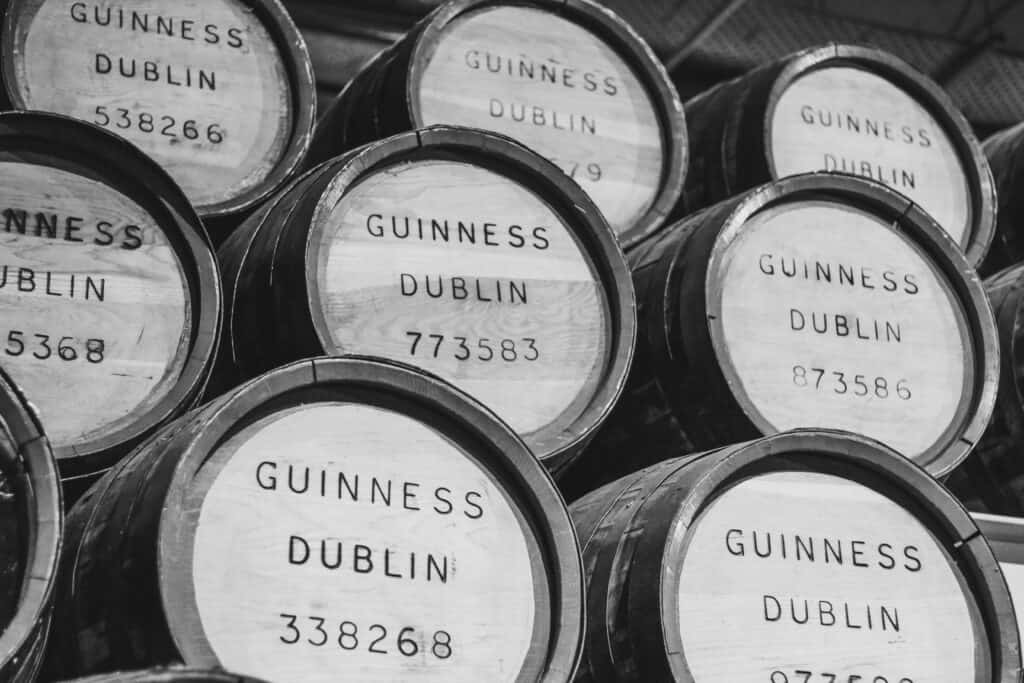
Arthur’s decision to found the Guinness Brewery was not merely a pursuit of profit but a commitment to craftsmanship and a devotion to producing unparalleled beer. He inherited a brewing landscape dominated by ales, yet his pioneering spirit led him to envision something distinct—a beer that would stand out in flavour and quality.
The St. James’s Gate Brewery quickly became a hub of innovation and dedication. Arthur’s insistence on using the finest ingredients and his unwavering attention to detail set the stage for what would become the iconic Guinness beer. While many of his contemporaries focused on brewing ales, Arthur’s foresight led him to explore the potential of stouts.
Arthur’s legacy extended far beyond the brewery walls. His commitment to the community and his employees was evident in his fair treatment of workers and his dedication to contributing positively to the local area of Dublin.
Arthur’s entrepreneurial spirit, commitment to quality, and dedication to brewing excellence laid the groundwork for what would become a global symbol of Irish culture. The legacy he established through his decision to take over the St. James’s Gate Brewery is a testament to the power of vision and determination in shaping history.

Early Focus on Brewing Ales
In its formative years, the Guinness Brewery embarked on a journey of experimentation and evolution that would redefine the course of brewing history. The brewery initially embraced the prevailing trend of producing ales, which were the dominant beer style of the time
Ales were known for their diverse flavours and were crafted using top-fermenting yeasts, resulting in ales ranging from pale to dark, sweet to bitter. Arthur’s early focus on brewing ales reflected the industry norms and preferences of 18th-century Ireland.
Ales were widely enjoyed, and their production provided an essential foundation for the brewery’s establishment and growth. However, Arthur’s pioneering spirit and his desire to distinguish his brewery from the rest led to a significant shift in direction.
The transition from brewing ales to stouts was a pivotal moment in the history of the Guinness Brewery. Stouts were characterised by their dark colour, roasted flavours, and often higher alcohol content.
This departure from the conventional ales represented Arthur’s commitment to pushing the boundaries of brewing and his pursuit of a beer that would stand out in taste and appearance.
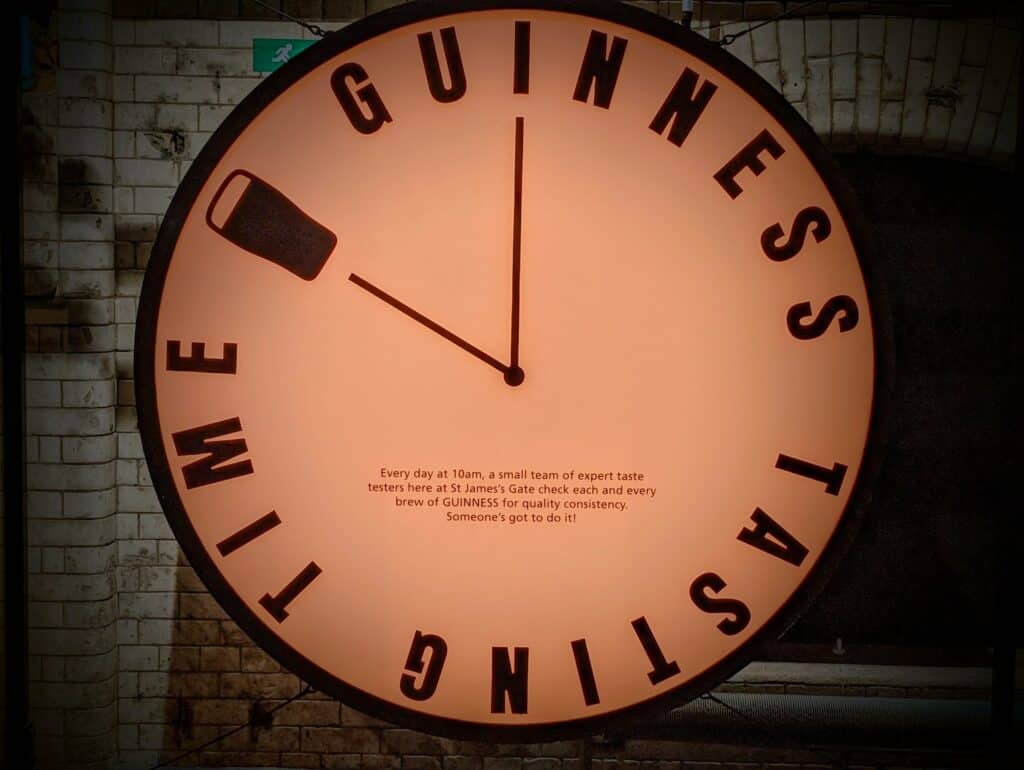
The real breakthrough came when Arthur incorporated roasted barley into his brewing process. This seemingly simple addition was transformative, imbuing the beer with its signature deep colour and distinct roasted flavours.
The roasted barley not only gave stouts their iconic hue but also contributed to their rich and complex taste profile. This innovative use of ingredients allowed Guinness to craft a beer that was unlike anything else on the market.
The transition from ales to stouts was a bold move that ultimately shaped the identity of Guinness beer. It was the beginning of Arthur’s vision to create something exceptional, a beer that could capture consumers’ hearts and palates in a unique way.
Introduction of Guinness Extra Stout in 1821
In 1821, the Guinness Brewery unveiled a creation that would leave an indelible mark on the world of brewing: the iconic Guinness Extra Stout. This pivotal year marked a significant milestone in the brewery’s history, solidifying its reputation as a trailblazer in the realm of innovative and exceptional beers.
The introduction of the Guinness Extra Stout was a testament to the brewery’s dedication to pushing the boundaries of flavour, quality, and craftsmanship. This bold step was not taken lightly; it was the culmination of years of meticulous experimentation and the relentless pursuit of perfection.
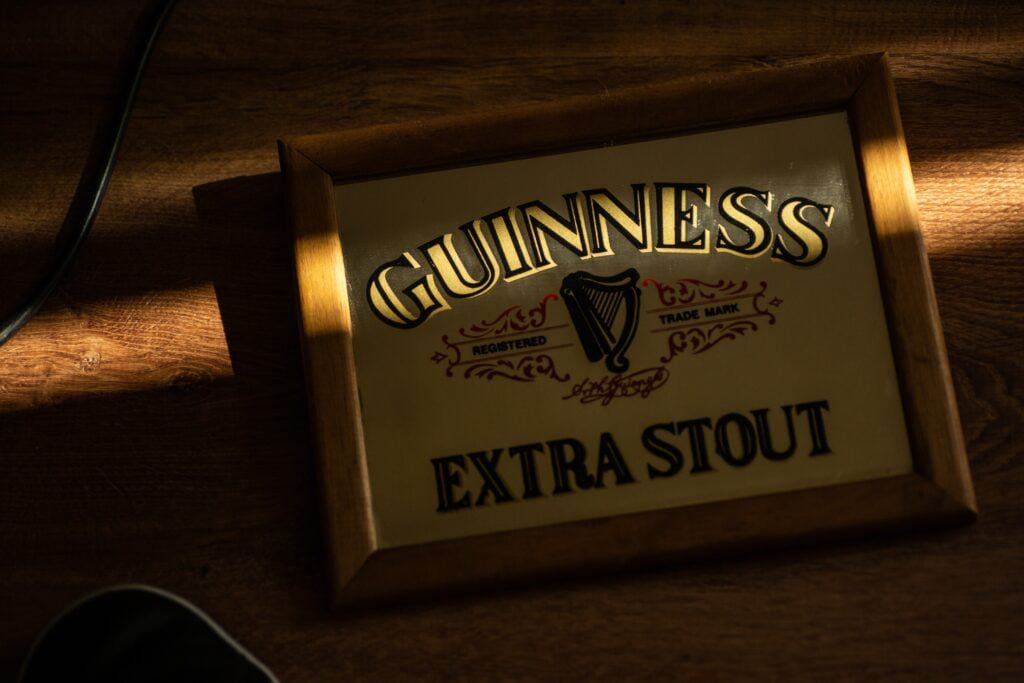
The Guinness Extra Stout quickly gained a reputation for its robust character and exceptional depth of flavour. Its velvety texture, coupled with notes of coffee, chocolate, and a hint of bitterness, created an unparalleled drinking experience.
This beer reflected the craftsmanship and dedication of the team and served as a springboard for the brewery’s global recognition. As the Guinness Extra Stout’s reputation spread, it garnered attention in Ireland and across continents, further establishing the brand’s international prominence.
Role of Arthur Guinness II
Arthur Guinness II, the visionary successor to his father’s legacy, played a pivotal role in shaping the trajectory of the Guinness Brewery and transforming it from a local institution into a global phenomenon.
Upon taking the reins of the brewery, Arthur Guinness II embraced a spirit of innovation that mirrored his father’s. Recognising the potential beyond Ireland’s borders, he embarked on a mission to introduce Guinness to international audiences. This led to the establishment of overseas breweries, enabling the brand to expand its reach in foreign markets.
One of Arthur Guinness II’s most remarkable contributions was his dedication to maintaining the brewery’s impeccable standards amid its expansion. Despite growing demands and increased production, he prioritised the integrity of the brewing process, ensuring that every pint of beer maintained the same quality and flavour.

Arthur Guinness II’s expansion efforts were not limited to production alone; he also recognised the significance of effective marketing and branding. His forward-thinking approach to advertising helped Guinness break through cultural and linguistic barriers, allowing the brand to resonate with diverse audiences.
Under his guidance, the famous Guinness harp became synonymous with quality, and the brewery’s advertisements transcended mere commercial appeals to become reflections of Ireland’s rich cultural heritage.
Arthur’s legacy also extended beyond the brewery walls, as he embraced a responsibility to his community and employees. His initiatives to provide fair wages, healthcare, and housing for workers were groundbreaking at the time, setting an example for corporate social responsibility that continues to influence businesses today.
Brewing Process
Malting and Roasting of Barley
The journey of Guinness begins with the selection of high-quality barley grains. These grains undergo a process of malting, where they are soaked in water, germinated, and then dried. However, it is in the roasting phase that the distinct roasted flavour that the beer is known for comes to life.

Roasted barley is heated to varying degrees, leading to the development of rich, coffee-like flavours and the deep, ebony hue that is characteristic of Guinness stouts. This roasted barley imparts a unique complexity to the beer’s taste, setting the stage for its distinctive profile.
Mashing
After roasting, the malted and roasted barley is ground to a fine consistency and mixed with hot water in a process called mashing. During this stage, enzymes within the malt convert the starches into fermentable sugars, creating a sweet liquid known as wort.
The careful manipulation of temperature and time during mashing influences the final flavour and body of the beer, ensuring that the wort is perfectly balanced and ready for the next step.
Boiling and Hopping
Once the wort is extracted, it undergoes a vigorous boil. Boiling and hopping are pivotal stages in the beer brewing process, imbuing the beverage with flavours, aromas, and bitterness that define its character. The boiling phase serves multiple purposes, from sterilising the wort to concentrating its sugars and enzymes.
During this phase, hops are introduced to the mixture. Hops contribute a bitterness that balances the sweetness of the malt, shaping the overall taste profile of the beer. Furthermore, hops infuse aromatic compounds that lend distinctive scents, enriching the sensory experience.
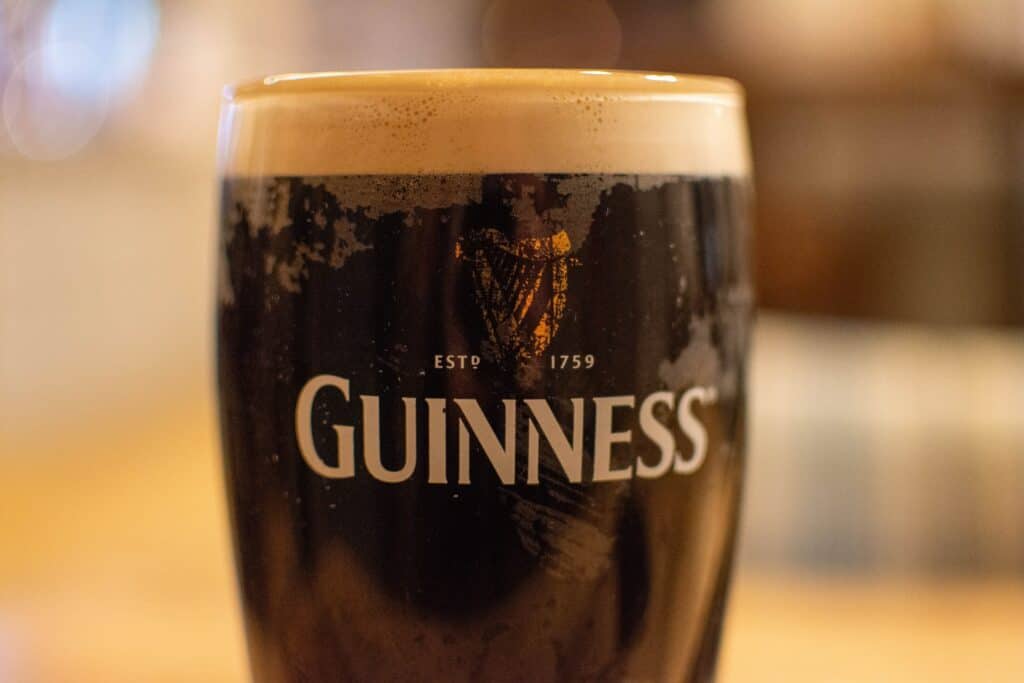
The precise timing and selection of hop varieties are carefully considered, allowing brewers to tailor the beer’s bitterness and aroma to their desired specifications.
In essence, boiling and hopping are artistic elements of the brewing process, where science and creativity converge to create a harmonious interplay of flavours that distinguishes the beer.
Fermentation
After boiling, the wort is rapidly cooled and transferred to fermentation vessels. Here, yeast—the magical microorganism responsible for transforming sugars into alcohol and flavour compounds—takes centre stage.
The yeast ferments the sugars in the wort, producing alcohol and a range of flavours that contribute to Guinness’s complexity. This fermentation process can take several days to complete, with the yeast working its magic to develop the beer’s unique character.
Maturation
Following fermentation, the beer undergoes a unique maturation process that sets Guinness apart. Instead of being immediately packaged, the beer is aged and blended. A portion of the newly brewed beer is mixed with a matured brew, creating a harmonious balance of flavours.
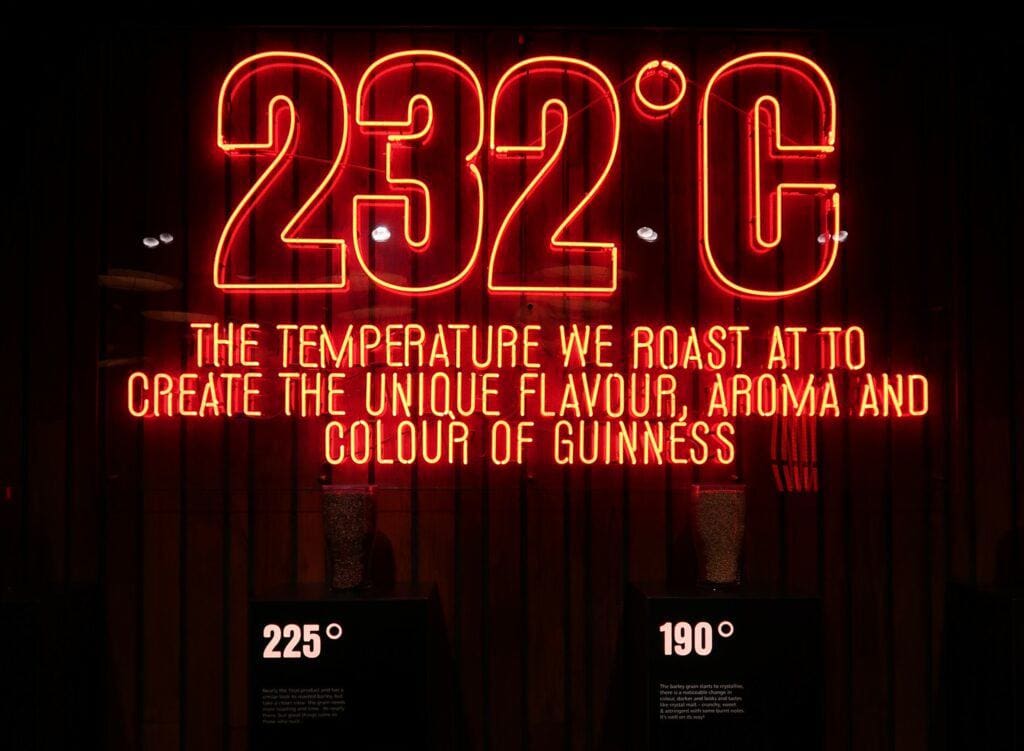
This maturation allows the beer’s flavours to meld and evolve, resulting in the smooth, velvety texture and unparalleled taste for which Guinness is renowned.
Flavour Profile
Guinness beer is a masterpiece of brewing craftsmanship that tantalises the senses with its rich, roasted, and smooth taste. At the heart of its flavour profile lies the distinct character of roasted barley, a key ingredient that imparts a complexity that is unparalleled in the world of beer.
Upon the first sip, the palate is greeted by a symphony of flavours reminiscent of dark chocolate, roasted coffee, and a subtle touch of caramel. The deep hue of the beer hints at the intricate roasting process that the barley undergoes, resulting in a beer that carries the essence of a well-brewed cup of coffee.
Yet, what truly sets Guinness apart is its remarkable smoothness. Despite the robust flavours that dance across the tongue, the beer glides effortlessly over the palate, leaving a velvety, creamy sensation in its wake.
This luxurious texture is a testament to the artful blending and maturation process that the beer experiences. The integration of newly brewed beer with matured brews results in a seamless balance, where the flavours are harmoniously intertwined with a sensation of silkiness.
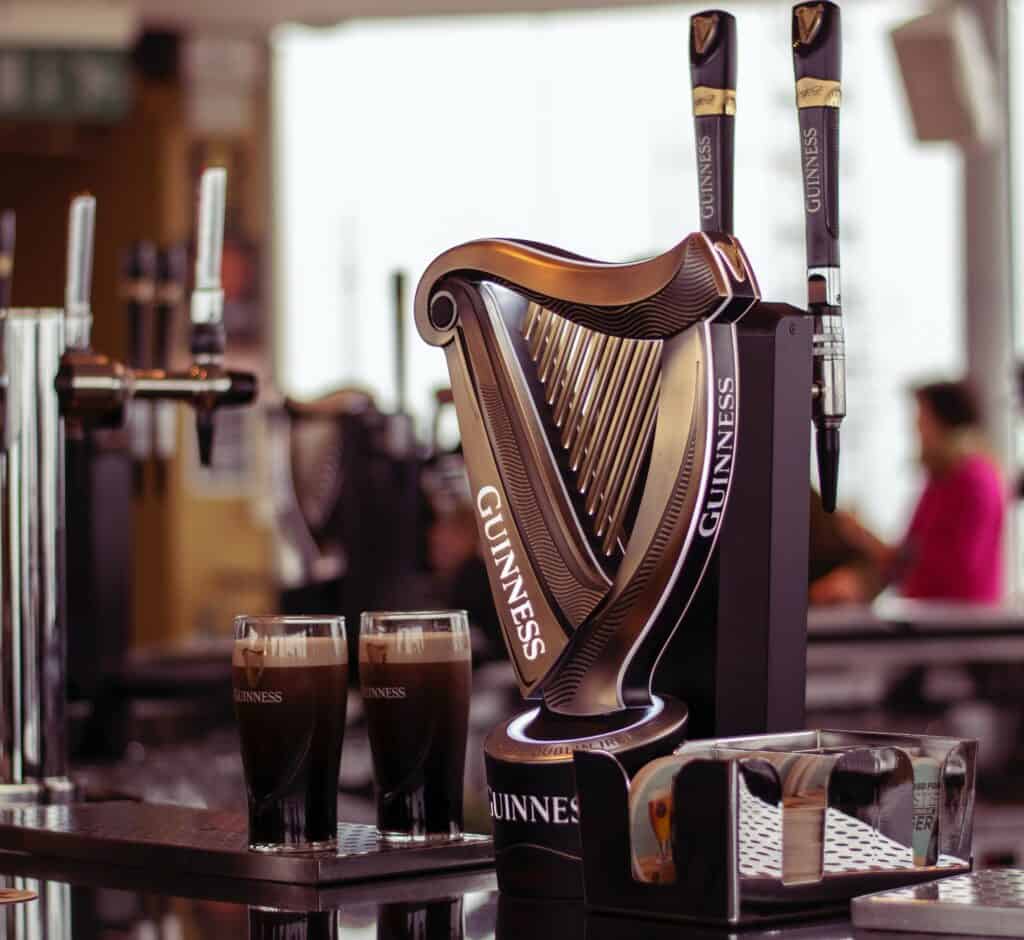
Guinness’s taste journey concludes with a satisfying and memorable finish. The bitterness of the hops, carefully calibrated to complement the richness of the roasted barley, compliments the different flavours experienced throughout the tasting.
How Guinness Differentiates Itself from Other Beers
Guinness’s rich, roasted, and smooth taste is an experience that distinguishes it from the vast landscape of beers. This uniqueness is attributed to several factors that set Guinness apart in a league of its own.
First and foremost is the use of roasted barley, an ingredient that defines Guinness’s flavour profile. The painstaking roasting process not only gives the beer its dark hue but also adds a dimension of flavour that stands out boldly against the backdrop of the beer world.
Furthermore, Guinness’s smoothness is a trait that makes it instantly recognisable. While many stouts and dark beers can carry a weighty, almost heavy sensation on the palate, Guinness defies expectations by delivering its bold flavours with remarkable lightness and creamy texture.
Guinness’s commitment to quality and craftsmanship is woven into its very essence. The meticulous selection of ingredients, the adherence to traditional brewing techniques, and the dedication to maintaining consistent standards throughout its global reach contribute to the beer’s distinctiveness.

Evolution and Global Spread
Expansion Beyond Ireland’s Borders
From its origins at the St. James’s Gate Brewery in Dublin, Guinness ventured beyond Ireland’s shores with an ambition to share its unique flavours and craftsmanship with the world.
The exportation of Guinness was a deliberate move to introduce new audiences to the distinctive taste that had captivated Ireland. As shipping routes expanded and communication improved, barrels of Guinness began finding their way to distant lands, igniting a global curiosity for the stout’s unparalleled quality.
Establishment of Foreign Breweries and Local Adaptations
Recognising the demand for Guinness beyond Ireland, the establishment of foreign breweries became a pivotal strategy. The first foreign brewery was founded in Park Royal, London, in 1936.
This marked the beginning of an era in which the beer embraced local adaptations, tailoring its brewing methods to suit the preferences and tastes of each region. While maintaining the core characteristics that defined Guinness, these adaptations allowed the beer to resonate with local consumers on a deeper level.
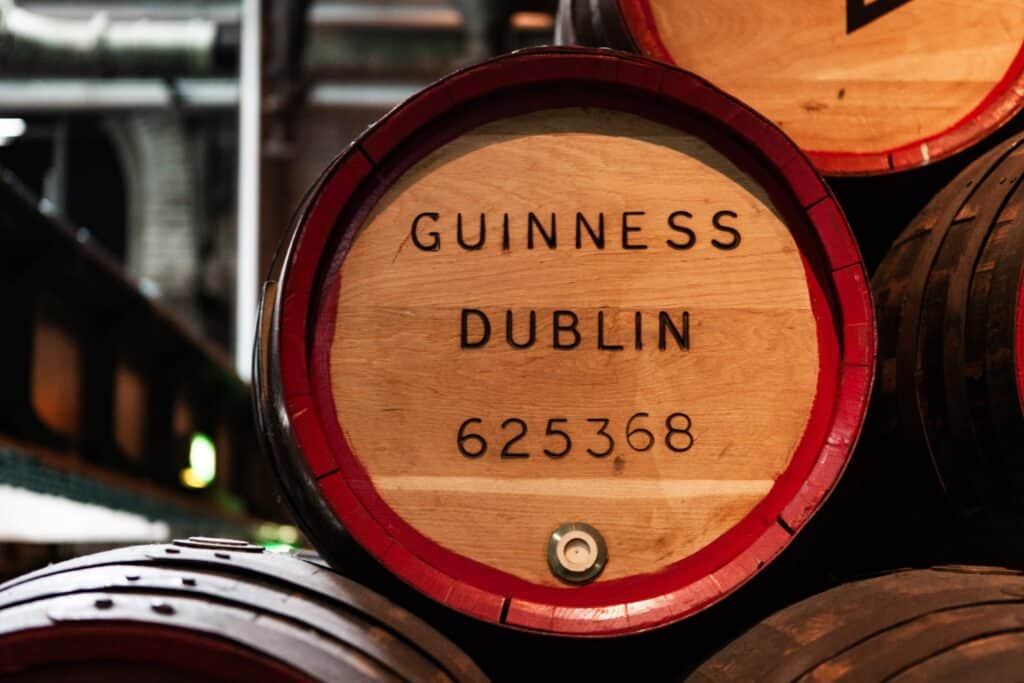
International Success and its Impact on Ireland’s Economy
The international success of Guinness did more than simply establish it as a global brand; it had a profound impact on Ireland’s economy and reputation. As Guinness’s popularity soared, it became a symbol of Ireland’s culture and heritage, drawing tourists from around the world to visit the St. James’s Gate Brewery.
This influx of visitors contributed to Ireland’s tourism industry, generating revenue and fostering a sense of national pride.
Furthermore, Guinness’s presence in foreign markets became a testament to Ireland’s ability to produce goods of exceptional quality. The stout’s reputation for excellence not only elevated the country’s image on the global stage but also bolstered its export industry.
The economic benefits of the beer’s international success reached far beyond the brewery itself, touching various sectors and contributing to the nation’s growth.
The evolution and global spread of the beer reflect its enduring commitment to innovation and excellence. From exporting to establishing foreign breweries and embracing local adaptations, Guinness’s journey has been marked by adaptability, quality, and a willingness to share its distinctive flavours with the world.
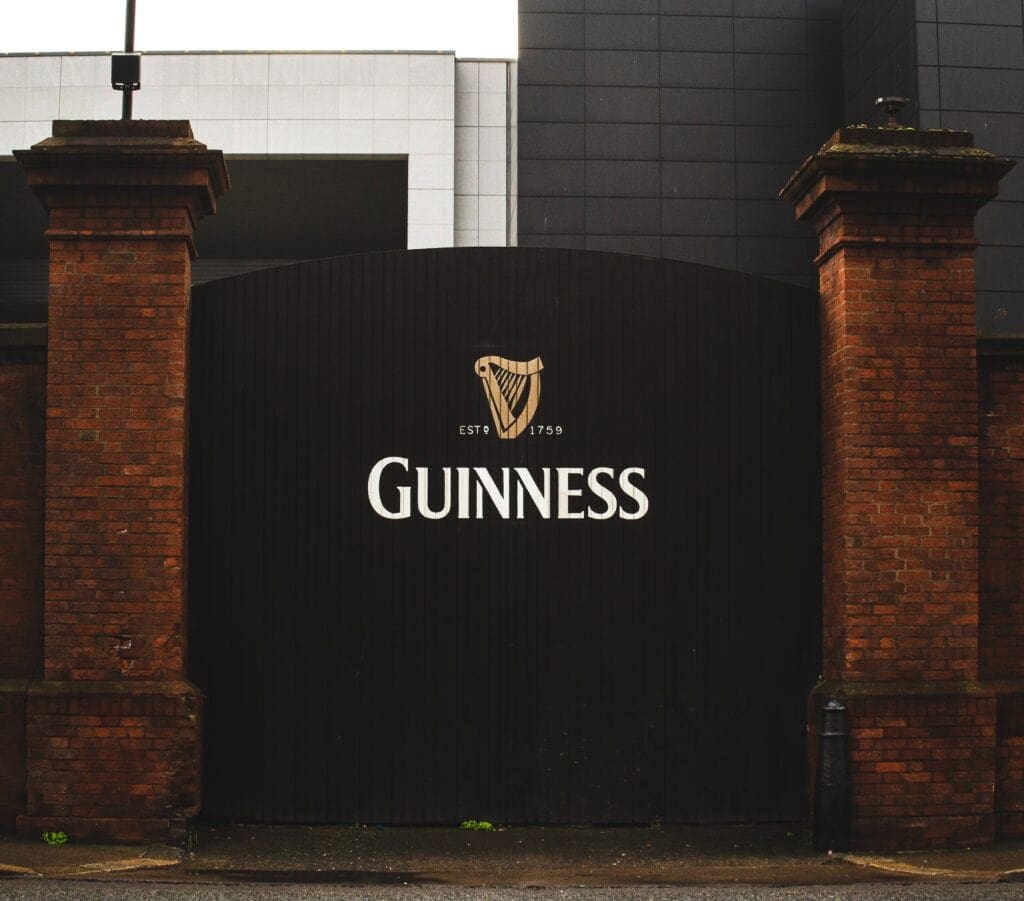
Its international success not only transformed the beer into an emblem of Irish culture but also played a significant role in driving economic growth and elevating Ireland’s reputation on a global scale.
Guinness and Ireland’s Cultural Identity
A Symbol of Irish Culture and Pride
Guinness has evolved beyond being a mere drink; it has become a symbol of Ireland itself. With its origins deeply intertwined with the country’s history, the stout has become an emblem of Irish resilience, innovation, and craftsmanship.
The distinctive flavours and brewing traditions of the beer mirror the richness of Irish culture, resonating with both locals and people across the globe. The iconic harp logo, which is actually a mirror image of the official emblem of Ireland, reflects the seamless blend of the brewery’s legacy with the nation’s heritage.
The Significance of the Guinness Storehouse as a Tourist Attraction
The Guinness Storehouse, located at the historic St. James’s Gate Brewery in Dublin, stands as a testament to the beer’s cultural significance. As one of Ireland’s most visited tourist attractions, the Guinness Storehouse offers an immersive experience that delves into the brewery’s history, brewing process, and impact on the nation.
Visitors can witness the evolution of the beer firsthand, from its humble beginnings to its international acclaim. The Storehouse not only showcases the beer itself but also serves as a tribute to the passion, innovation, and craftsmanship that define Irish culture.
It’s a pilgrimage for beer enthusiasts, history buffs, and curious tourists alike, offering a deeper connection to Ireland’s identity through the lens of Guinness.
Integration into Irish Celebrations and Festivals
Guinness has seamlessly woven itself into the fabric of Irish celebrations and festivals, becoming an integral part of the nation’s social calendar. From St. Patrick’s Day celebrations to local festivals, Guinness is a constant presence, reinforcing the strong bond between the beer and Irish culture.
The distinct sight of a pint of Guinness served in traditional pubs, often accompanied by live music and warm conversations, encapsulates the convivial spirit of Irish society. The beer’s dark hue even lends itself to unique traditions, such as the perfect pour that results in a creamy head reminiscent of the iconic Irish landscapes.
The significance of Guinness on Ireland’s cultural identity is undeniable. Guinness has ingrained itself into the heart of Irish culture as a symbol of pride, a tourist attraction that pays homage to the nation’s history, and an integral part of national celebrations.
Its legacy extends beyond being a beloved beverage; it is a reflection of the Irish spirit, resilience, and the enduring connection between tradition and innovation.
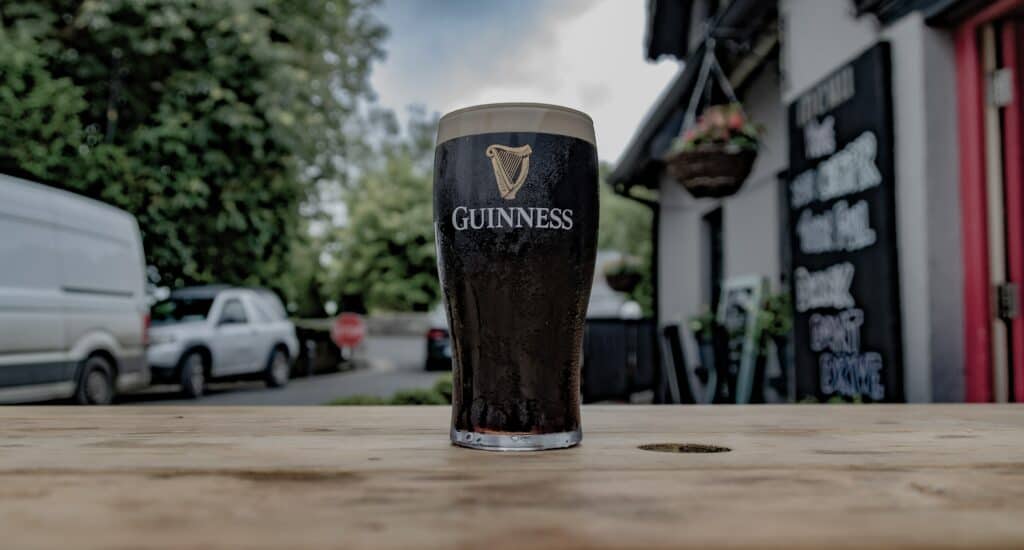
Guinness has Become a Distinct Symbol of Irish History and Culture
In the world of brewing, few names resonate as deeply and universally as Guinness. From its humble beginnings in 1759 to its current status as a global icon, Guinness beer has transcended its role as a mere beverage to become a symbol of excellence, innovation, and cultural pride.
The journey of Guinness, marked by its creation, history, brewing process, distinctive flavour, and its significance to Ireland’s cultural identity, encapsulates a story of passion, dedication, and the pursuit of perfection.
The story of Guinness is a testament to the power of a simple idea combined with unwavering commitment. It has transcended its origins to become an internationally recognised symbol of Irish culture, craftsmanship, and excellence.
Through its rich history, unique flavour profile, and deep-rooted cultural significance, the beer has established itself as more than just a beverage; it is an enduring legacy that reflects the spirit of innovation, community, and tradition.
Whether savoured in Dublin or enjoyed halfway around the world, a pint of Guinness is a toast to heritage, a celebration of unity, and a reminder of the power of a single vision to shape the world.
If you’re interested in experiencing the best of Ireland, check out our blog on the Best Bars in Ireland, by city: The Ultimate Guide to Over 80 Great Bars.






